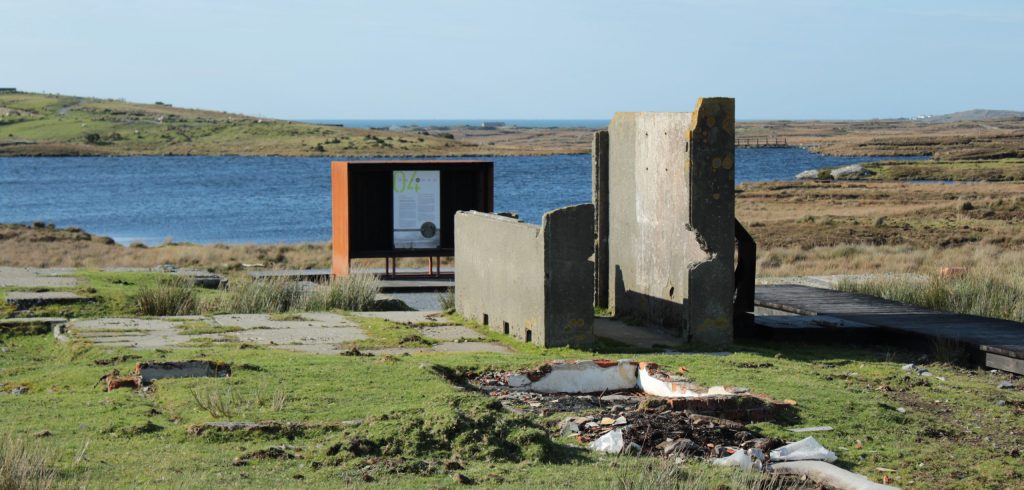
Visitor Experience at
the Marconi Wireless Station
A new visitor experience at the Marconi Wireless Station, (1907-1922), also the landing site of Alcock and Brown’s historic first non-stop transatlantic flight (1919). The Fáilte Ireland brief for this Wild Atlantic Way Signature Discovery Point was to improve the visitor experience of the Derrygimlagh story and to bring landscape, culture and history to life in an informative and entertaining way. There were significant challenges. The major one was the location itself, not only was it isolated, but there was the challenge of building on the bog itself.

Very little of the Marconi Station now survives, there remains only the haunting beauty of remnants in a bog landscape. Yet this place near Clifden was once the setting of two outstanding technological achievements of early modernity. In 1905, Guglielmo Marconi established the most advanced telecommunications infrastructure of its time; by 1907 he had created the first commercial transatlantic wireless signal connecting Europe and North America.
Then, in 1919, Alcock and Brown landed here after completing the first non-stop transatlantic flight. These achievements in communications and aviation connected the old and the new worlds and marked the beginning of an era of huge technological advances. They also demonstrated how a small country at the edge of Europe could make a significant contribution to world history through technological innovation.


The Derrigimlagh story has been told across a number of stop points along a Looped Walk, following historic pathways, to the location of former Marconi Company landmarks and the Alcock & Brown landing site. Six of the stop points are shelters; a series of ‘Hides’ has been installed, to form compact sheltering spaces containing interpretative content and providing weather protection.
These are constructed from a corten steel plate and stained wood. These folded steel plates likened to the 30ft high plates that once hung in the Condenser House, stand mute in the bog; their crisp forms breaking horizontal lines left by the bog cuttings. With their contained stories, the Hides are sited to be approached as mysterious monoliths, or as the spines of books, that relate in scale and height to the scant few vertical remains onsite. Gaps in the Hides formally and visually connect the content with the site context. On the walk visitors also encounter a number of art installations, by Cleary Connolly, that celebrate the site’s history of innovation.
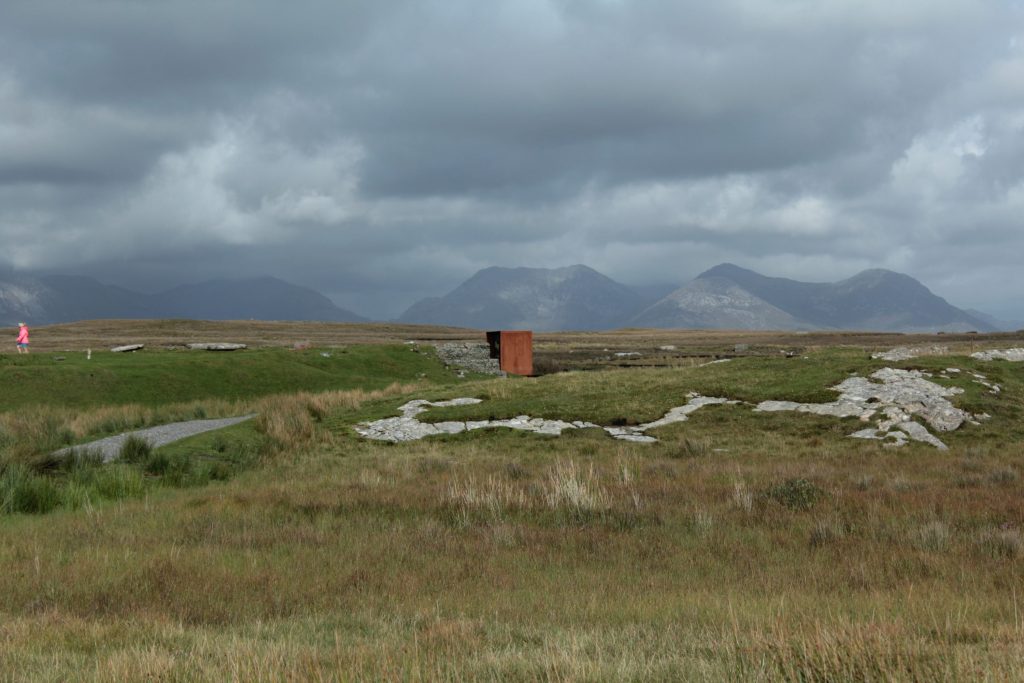
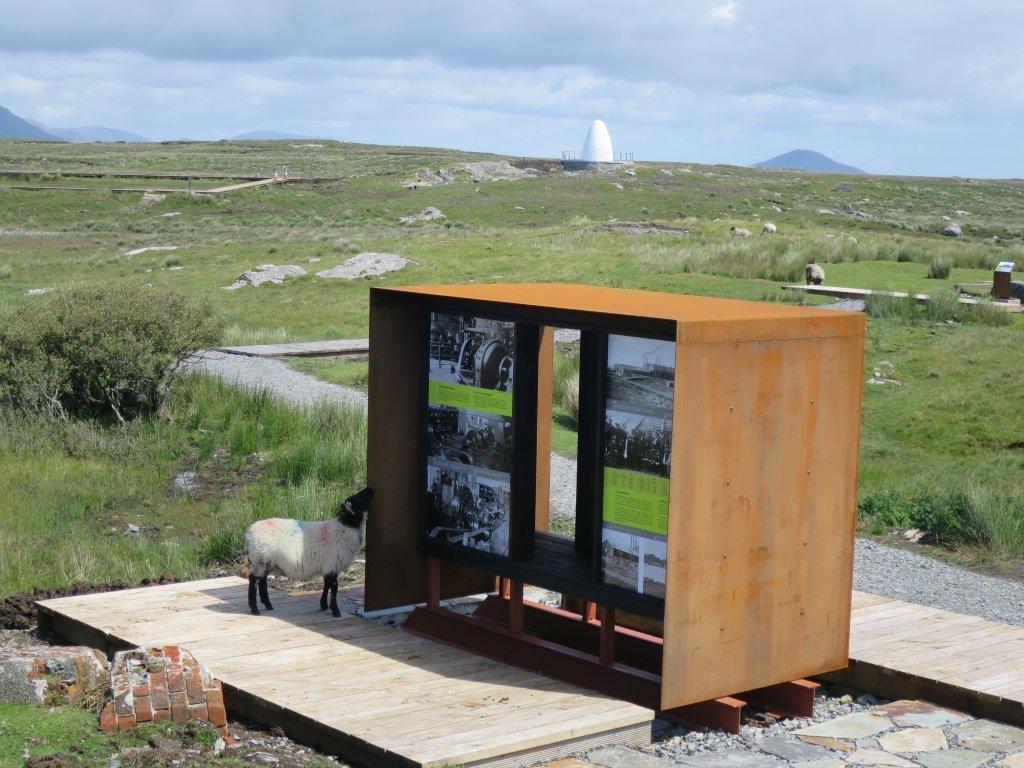
A new Entrance / Orientation point allows for the parking of cars at the beginning of the Walk. The cast in-situ concrete of the new entrance walkway and orientation point refers to the rough essence and ruined decay of the remaining original Marconi-era concrete, while its scale matches the length of the Condenser House footprint within. The walkway, constructed as a concrete bridge, floats over the bog and connects two fixed concrete islands of matching dimensions.


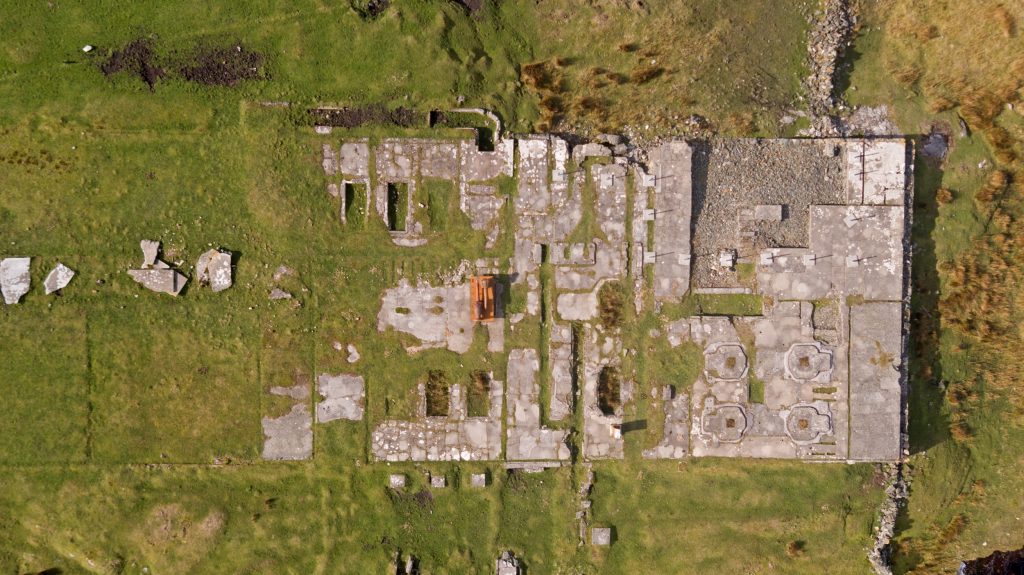
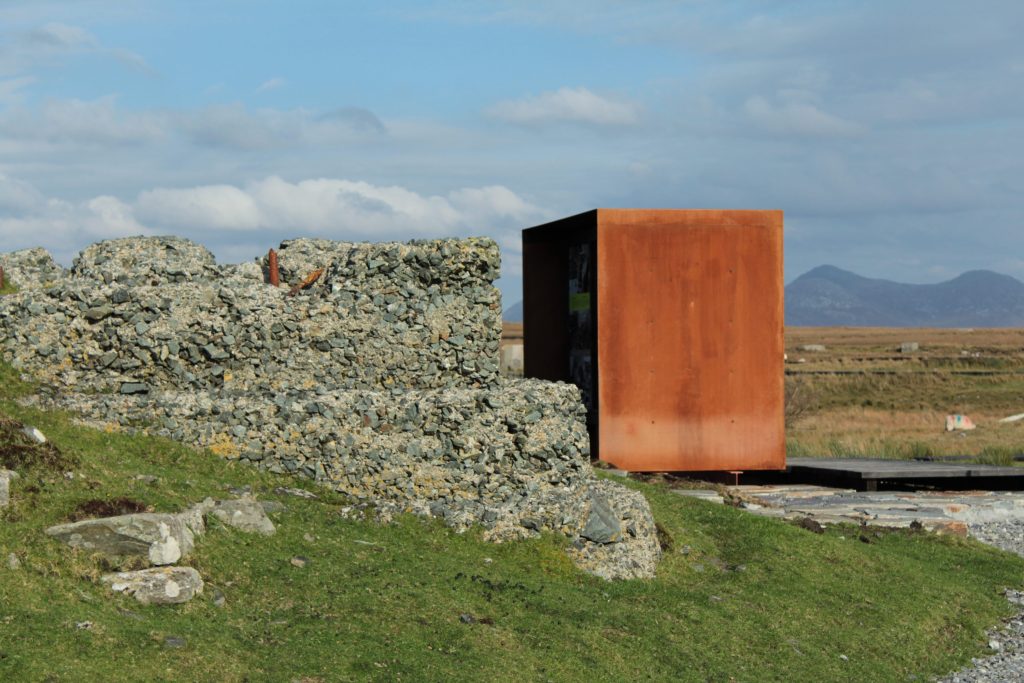
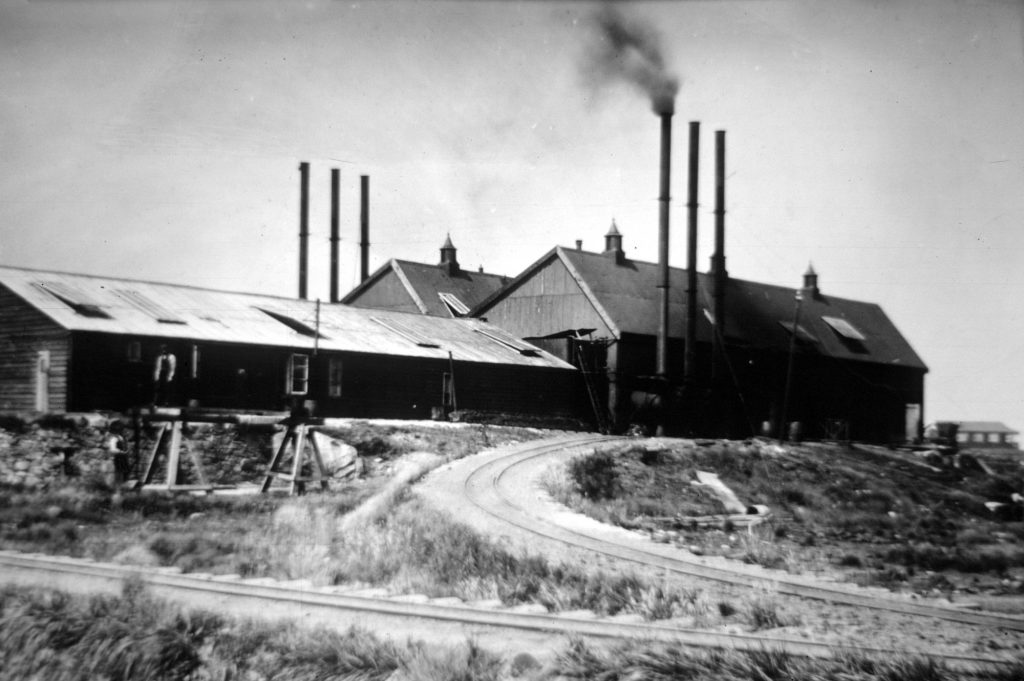
Marconi’s wireless station was also a place of research and an experimental laboratory for the best communications engineers of the time. The station generated industrial quantities of electricity from turf over twenty years before the opening of Ardnacrusha. Security was notoriously tight at the site and all visitors, including James Joyce, were refused entry without prior clearance.

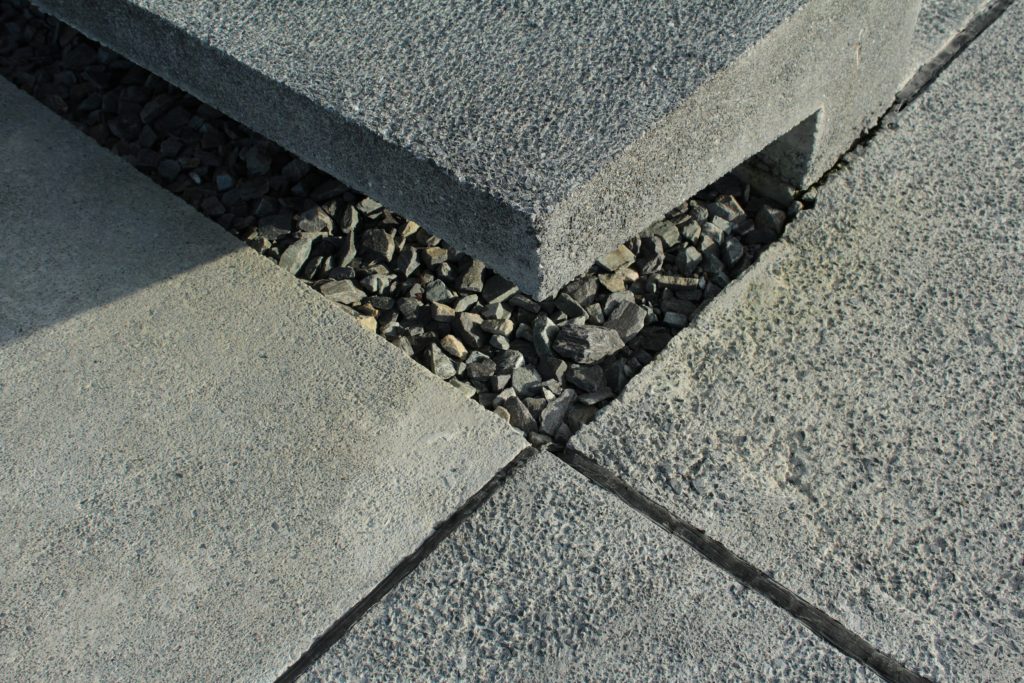
The Fáilte Ireland brief was to improve the visitor experience of the Derrygimlagh story and to bring landscape, culture and history to life in an informative and entertaining way. There were significant challenges. The major one was the location itself, not only was it isolated, but there was the major challenge of building on the bog itself.
This was achieved by a mixture of spreading the load, as with the Hides and boardwalks, and by floating – by building directly onto the bog with layers of stone and terra membrane – as with the car park and entrance walkway. Materials include cast in-situ concrete with a light cut power-washed finish for exposed local aggregate, Douglas Fir Grooved & CCA Pressure Treated boardwalks, locally quarried Gneiss Stone, Clause 804, Corten Steel, imported bog topsoil.
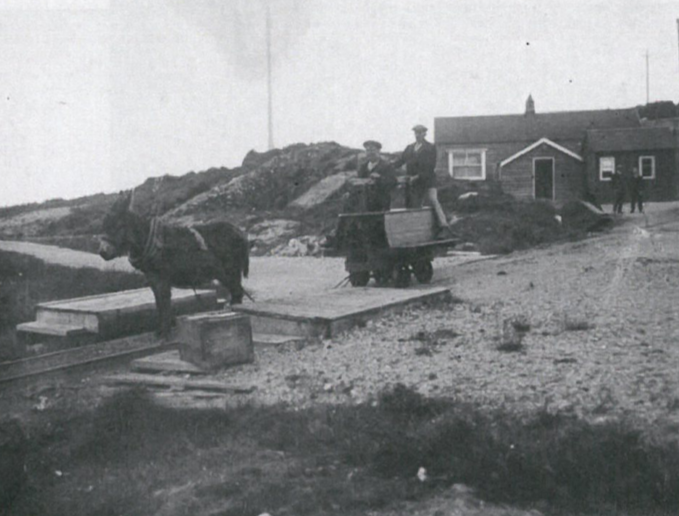
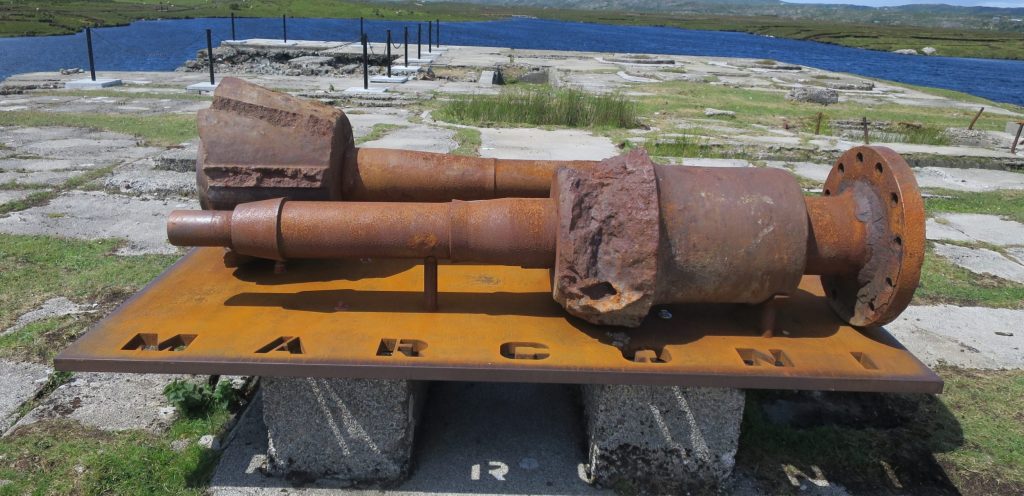
AWARDS
RIAI Awards 2017:
Best Place
AAI Awards 2017:
Special Mention
UK Museum and Heritage Awards 2018:
International – Shortlisted
